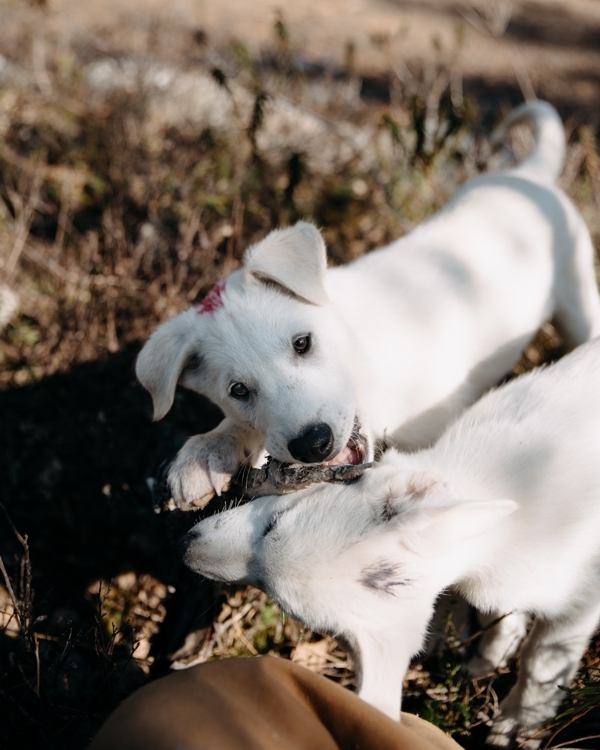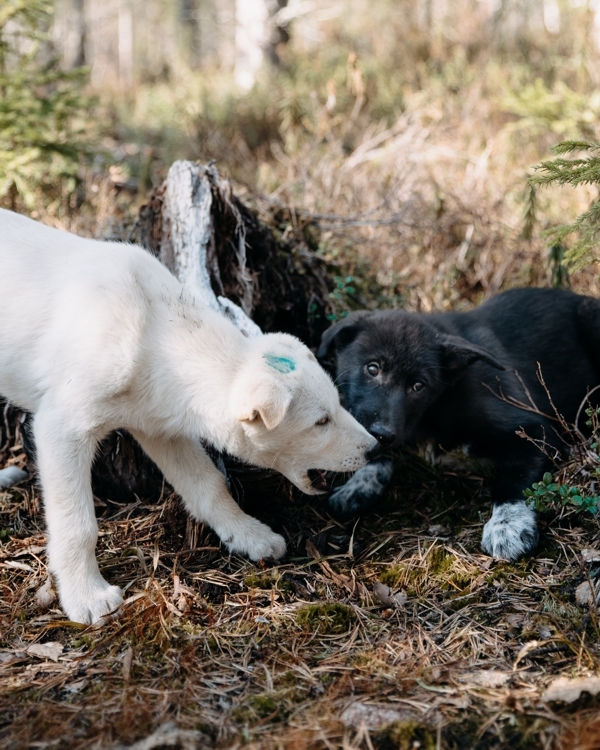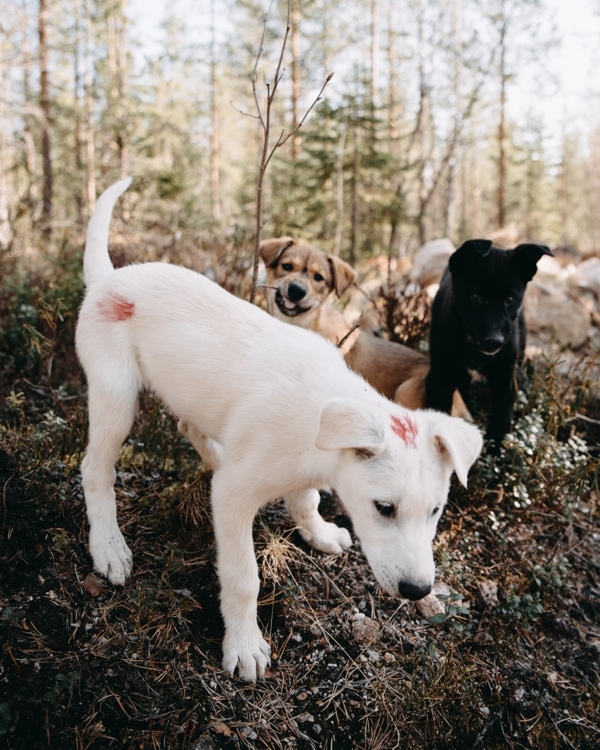The Painted Puppies: Why We Mark Our Pups with Nail Polish
At Bearhill, every detail of how we raise our puppies serves a purpose — even the colourful markings some of you might have spotted on our youngest sled dogs. Today, I want to share the story behind what we affectionately call our “painted puppies.”
The Challenge of Identifying Lookalike Pups
When a litter of puppies is born, each one usually comes with some unique markings that help us tell them apart — a white paw, a brown spot on the nose, maybe a slightly darker patch behind the ear. Add gender into the mix, and it’s often enough to keep track of who’s who.
But occasionally, nature decides to play a trick on us. Sometimes we get a litter where half (or more) of the puppies look nearly identical. This happens most often with all-black or all-white litters. And while it’s adorable, it also makes our job — weighing, training, observing behaviour, and building a bond with each pup — a lot harder.
Why Identification Matters
Being able to identify each puppy individually is key to giving them the best start in life. We weigh them regularly, monitor how they grow, track their behaviour, and begin early-stage training with their names. But if we can’t tell which puppy is which, it’s impossible to know who’s gaining weight properly, who’s developing what skills, and who needs a little extra support.
We start with descriptions: “the one with the slightly longer white sock” or “the male with the narrow stripe.” But these identifiers aren’t always reliable, especially when the pups are moving quickly, growing fast, and wrestling their way through the day.
Solutions That (Sometimes) Don’t Stick
One common method is using coloured puppy collars. These work in theory, but in practice they’re far from perfect. Pups grow fast, live outside, get dirty, and their mothers are constantly cleaning them. Collars get chewed, fall off, or disappear entirely in the rough-and-tumble of kennel life.
That’s why we sometimes turn to something a little less conventional but far more reliable: nail polish.
Enter the Painted Puppies
When collars fail or visual markings aren’t enough, we use small dabs of coloured nail polish on the pups. It’s safe, temporary, and surprisingly effective. Typically, we’ll mark them on the back of the neck with colours like pink, green, or blue — just enough to keep track during weigh-ins or feeding.
But recently, with one of our current litters, we had to go a step further.
We’re taking these pups on their early training walks through the forest — five white puppies, all very fast, very fluffy, and very hard to tell apart once they start zooming around the trees. We needed something more visible.
So this time, we gave each pup two large, brightly coloured marks: one on the back of the neck and another on their flank. Now, when they’re racing around on the trail, we can identify them from a distance. That means we can call their names correctly, track who’s responding to training, and build more accurate, positive associations for each pup.
Why It Matters
Using their names during training helps puppies learn faster. If we can spot who’s who and reward the right behaviour at the right time, we’re setting each puppy up for success — teaching them that their name means “pay attention,” that good things follow when they respond, and that their human is worth keeping an eye on.
So if you visit and see a white pup with a bold streak of pink or green on its back, now you know — that’s one of our painted puppies, and they’re well on their way to becoming a confident, focused sled dog.
If you would like to learn more about our procedures, policies, and training methods, check out the blog articles below.
- Why the Dog Walker is One of the Best Tools in Our Kennel
- Why We Walk the Puppies: Building the Foundation for a Sled Dog’s Life
- Appetite First: Building Eager Eaters in Our Puppies
- Why We’re a No-Kill Kennel: Bearhill’s Approach to Euthanasia and End-of-Life Care
- Polarised Sled Dog Training: Building Strength and Endurance at Bearhill
- Preparing for Winter: Training Dogs, Training People, and Building a Stronger Team
- Sled Dog Endurance Training: Gradual Progress and Recovery for Peak Winter Fitness






